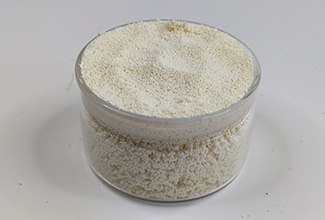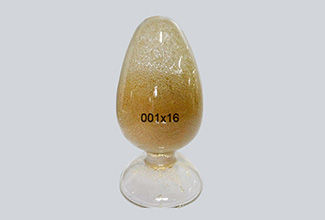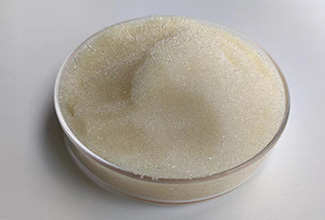GD200 Chelating Resin thiourea functional group for mercury and recover precious metals in industrial wastewater sample for Delivery
USA customers ordered sample of Chelating Resin thiourea functional group for mercury and recover precious metals in industrial wastewater Ready for Delivery.
GD200 chelating resin is a macromolecular polymer with special chiral functional groups on the macroporous styrene-divinylbenzene skeleton.
GD200 has a thiourea functional group, which can selectively remove mercury and recover precious metals in industrial wastewater. Mercury, in particular, can be firmly bound to functional groups and become highly stable complexes with higher affinity than other heavy metals. These properties are not affected by high concentrations of chloride (or sulfate) in water. The mercury content in water can be reduced from 2 to 20 ppm to less than 0.05 ppm. The GD200 absorbs 150g of mercury and gold, or 60g of platinum or palladium per liter of resin.
GD200 is more resistant to oxidation than other sulfur-based resins and is not afraid of contact with air, but free chlorine and strong oxidants will destroy it, which must be removed by activated carbon filtration first.
It is mainly used to remove low-content dissolved mercury salts in wastewater, and can also be used to recover precious metals in rinse water of electroplating and electronic industries. GD200 is also used in hydrometallurgy to separate precious metals from acid solutions. Mercury and precious metals are strongly adsorbed and run for long periods of time (thousands of hours), so regenerating this resin for reuse is generally not considered.
Samples of carton box package, for large goods, the package will be Food grade LDPE valve bag, 25L/bag or Woven bags lined with plastic bags. It can also be packed by plastic barrels or other containers according to customer’s demand. This product is a non-dangerous goods. The storage temperature is 5-40 ℃. It should be prevented from dehydration and exposure.
.png)
.png)
.png)
GD200 chelating resin is a macromolecular polymer with special chiral functional groups on the macroporous styrene-divinylbenzene skeleton.
GD200 has a thiourea functional group, which can selectively remove mercury and recover precious metals in industrial wastewater. Mercury, in particular, can be firmly bound to functional groups and become highly stable complexes with higher affinity than other heavy metals. These properties are not affected by high concentrations of chloride (or sulfate) in water. The mercury content in water can be reduced from 2 to 20 ppm to less than 0.05 ppm. The GD200 absorbs 150g of mercury and gold, or 60g of platinum or palladium per liter of resin.
GD200 is more resistant to oxidation than other sulfur-based resins and is not afraid of contact with air, but free chlorine and strong oxidants will destroy it, which must be removed by activated carbon filtration first.
It is mainly used to remove low-content dissolved mercury salts in wastewater, and can also be used to recover precious metals in rinse water of electroplating and electronic industries. GD200 is also used in hydrometallurgy to separate precious metals from acid solutions. Mercury and precious metals are strongly adsorbed and run for long periods of time (thousands of hours), so regenerating this resin for reuse is generally not considered.
Samples of carton box package, for large goods, the package will be Food grade LDPE valve bag, 25L/bag or Woven bags lined with plastic bags. It can also be packed by plastic barrels or other containers according to customer’s demand. This product is a non-dangerous goods. The storage temperature is 5-40 ℃. It should be prevented from dehydration and exposure.
.png)
.png)
.png)
Related Products
-
 D113 Weakly Acidic Polyacrylic Cation Exchange ResinAppearance: Milky white or pale yellow opaque particles.The degree of crosslinking : 7%.Ionic form:H+
D113 Weakly Acidic Polyacrylic Cation Exchange ResinAppearance: Milky white or pale yellow opaque particles.The degree of crosslinking : 7%.Ionic form:H+ -
 001x16 Strong Acid Cation Exchange ResinAppearance: Claybank to tan transparent spherical particle.The degree of crosslinking : 16%.Ionic form:Na+
001x16 Strong Acid Cation Exchange ResinAppearance: Claybank to tan transparent spherical particle.The degree of crosslinking : 16%.Ionic form:Na+ -
 201×2 Strong Base Anion Exchange resin(Gel Type)Appearance: Light yellow to gold yellow transparency sphericity particles.The degree of crosslinking : 2%.Ionic form: Cl-
201×2 Strong Base Anion Exchange resin(Gel Type)Appearance: Light yellow to gold yellow transparency sphericity particles.The degree of crosslinking : 2%.Ionic form: Cl-
Message

